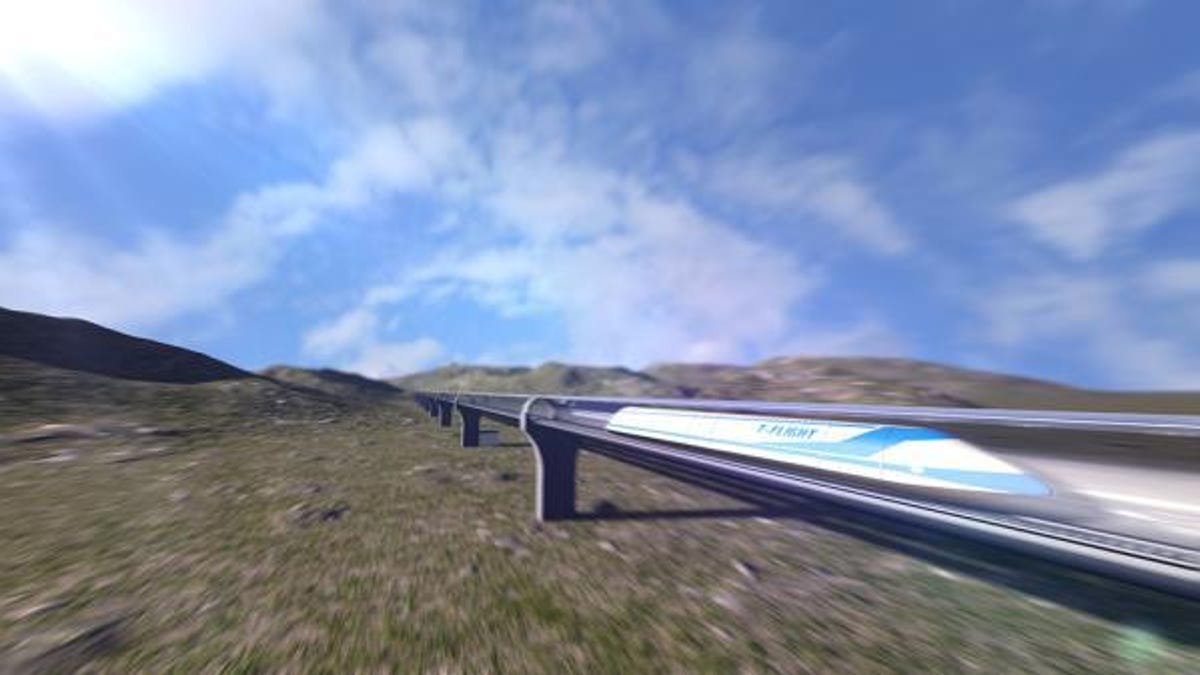China to take on Hyperloop with supersonic 'flying train'
The People's Republic plans to stick a MagLev train inside a vacuum tube and shoot it way past the sound barrier.

This flying train really flies ... but not literally.
Hyperloop hype has been going global lately with talk of bringing Elon Musk's crazy vacuum tube transport system everywhere from Indiana to Indonesia. Now China is getting in on this future with plans to develop what it refers to as a "flying train" that's actually similar to a Hyperloop, but promises far faster flinging.
China Aerospace Science and Industry Corp. (CASIC) is working on a transit system that neither really flies nor looks like a conventional train, but could travel at up to 2,485 miles per hour (4,000 kilometers per hour), chief engineer Mao Kai said via the state-run China News Service, or CNS.
By comparison, Hyperloop promises just barely sub-supersonic speeds closer to 760 mph (1,200 kph).
The concept is essentially a MagLev train in a vacuum tube, borrowing concepts from Hyperloop, bullet trains and supersonic flight, according to the South China Morning Post.
There's no timeline for when we might actually see the flying train in action, but there is plenty of room for skepticism. Kai addressed one key question, saying "the vehicle's acceleration speed would be slower than a plane in taking off so passengers could be free of safety concerns," according to CNS.
In fairness, China has turned some far-out transit ideas into tangible realities in the past. Take this bizarre elevated bus. The country also boasts a bullet train that tops speeds of 300 mph (483 kph).
The flying train is the first serious (it seems) concept I've heard of, anywhere, for supersonic ground transportation. If it works, it would be about five times faster than commercial jetliners today.
At that speed, let's hope no one ever pulls the emergency brake -- if you could even design such a thing without breaking physics first.
Technically Literate: Original works of short fiction with unique perspectives on tech, exclusively on CNET.
Crowd Control: A crowdsourced science fiction novel written by CNET readers.

